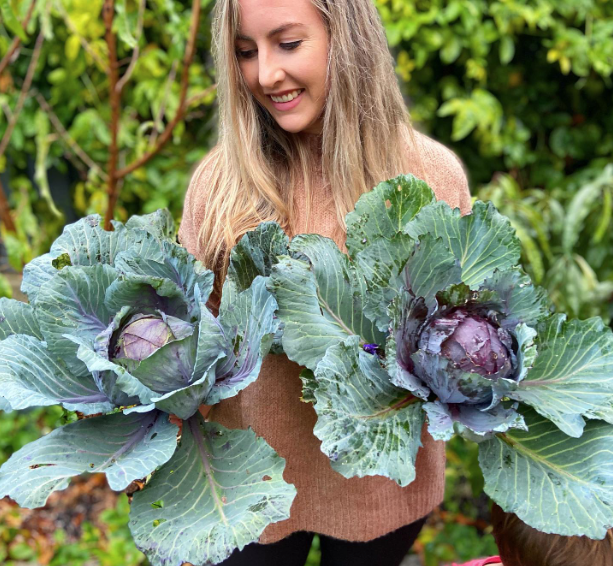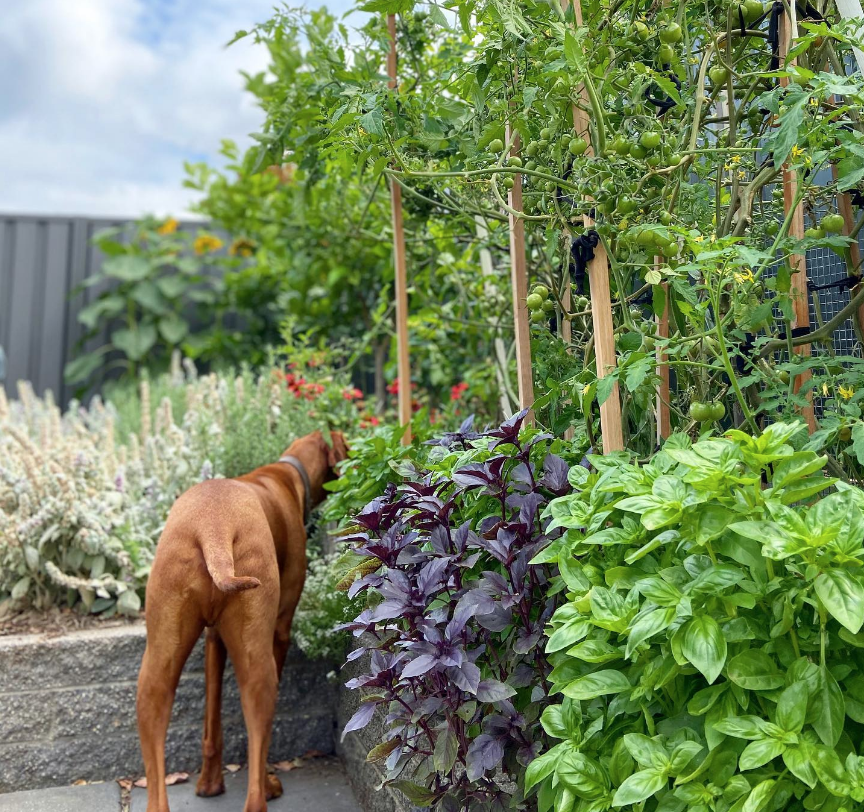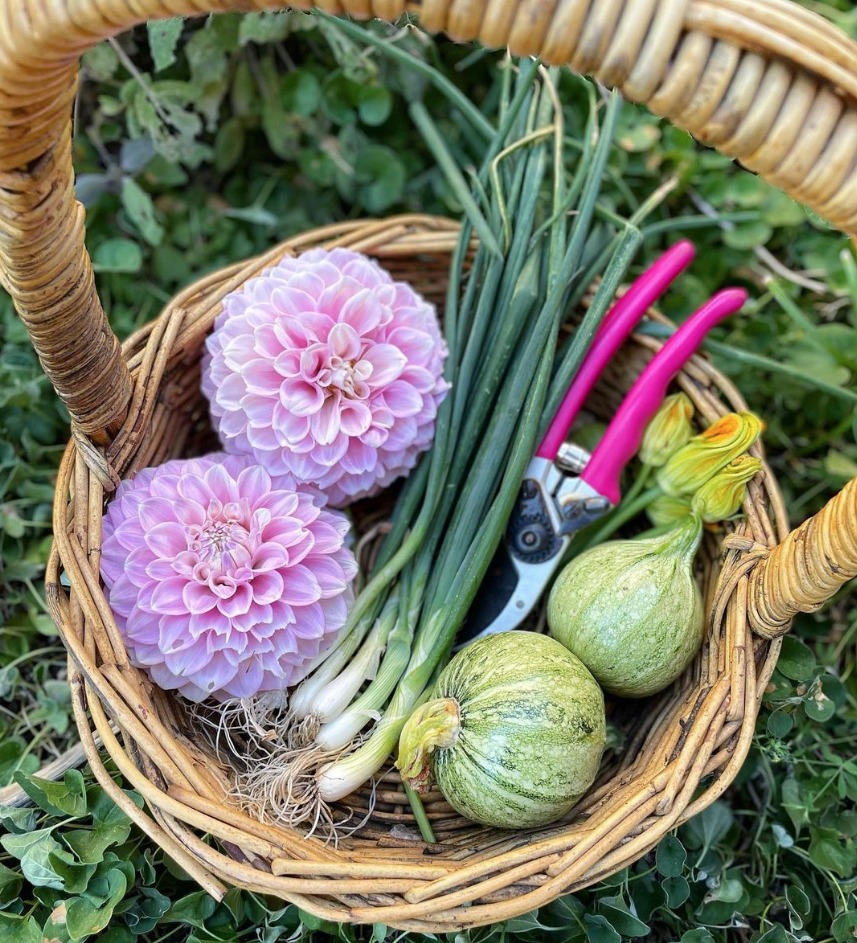Learn to grow microgreens at home, join Grow It Local +
Learn > How To
Things I wish I knew

tarting an edible garden can be both exciting and daunting. I began my growing journey almost 6 years ago and learnt through trial, many errors and happy triumphs along the way. There was a great deal of joy in this learning experience but there are a few things I wish I knew before I started.
SOIL HEALTH
Start from the ground up! It is so important to get to know what soil you are working with. Our soil was extremely sandy which lacked nutrients and had little capacity to retain water. This meant that most of my plants failed to thrive and often died. I have since built up my soil using local, quality compost, local aged manures and organic fertilisers. I have also established a home composting system which means our kitchen scraps and green waste becomes nutrient-dense soil. My soil holds on to water much better now however, I still like to add a thick layer of pea straw to help retain moisture, particularly during our dry hot summers.
TIP: I give my garden beds a top-up between planting which is usually in early spring and mid-autumn. Putting the effort into your soil will reward you with an abundance of produce. Healthy, nutrient-rich soil means healthy, nutrient-rich plants and produce.
WHAT’S IN SEASON
Get to know what’s in season in your area. I live in Adelaide, and we have a Mediterranean style climate with hot dry summers and fairly mild winters with the occasional frost. In mid-spring when the soil is nice and warm and the risk of frost has passed, I plant my summer crops which usually include tomatoes, zucchini, capsicums, eggplant, pumpkin, melons, basil, corn and sunflowers. By mid to late autumn, the air is crisp and my summer crops have finished producing, at this time I prepare to plant winter veg. Wintertime calls for garlic, carrots, peas and all the brassicas at my place. The brassica family includes broccoli, cauliflower, kale, cabbage and mustard greens. By planting what’s in season you should avoid any unexpected casualties.
FINDING THE RIGHT SPOT
When it comes to positioning it is important to note the space you have and how much sunlight the area receives. When starting out, I recommend starting small and as your confidence and passion grow, so will your garden… trust me it’s addictive! My first veggie patch was a collection of pots and a very small, raised bed down the side of our house. This patch only saw 4 hours of direct sunlight in summer and close to 2 in winter. I crammed too many seedlings in this small space, struggling to envisage them at their full size. This meant my plants were desperately competing for sunlight and nutrients and produced very, very little. What I’ve learned is that most edible plants require 6 hours of direct sunlight to thrive, those who can cope with less are leafy greens and herbs.
It’s also important to note that the sun sits much lower in winter so whilst some areas in my garden are in full sun over summer, they are close to full shade in winter.
Tip: Get to know your growing space and create a sun map or garden diary to know what will grow best where. Most seeds and seedlings will have a label to instruct you on spacing and sun requirements, this is important to stick to, to avoid plants competing for sun and nutrients. Good spacing results in good produce.

SEEDLINGS
To get the best head start it is important to select quality seeds or seedlings from local suppliers such as nurseries and garden centres. Avoid seedlings that are root bound (you will see clusters of roots appearing from the drainage holes) these plants are already under stress and are less likely to perform well. Avoid plants that have yellow or browning leaves (particularly spotted leaves) which can be a sign of fungal issues… you don’t want to introduce these to your garden. Although tempting, avoid seedlings that are already producing for example broccoli which already have heads on them. Instead, select young, healthy seedlings which will have time to adapt to the growing conditions of your patch before producing. In the long run, you will have better quality harvests.
VERTICAL SUPPORT
Some plants love to climb and require extra support to do so. Climbers include runner/climbing beans, peas, some tomatoes, cucumbers and some squash varieties. Support can be offered with wooden stakes, chicken wire, archways, fencing, pergolas, or other creative structures. By offering vertical support you can maximise space and sunlight freeing up ground space below to grow more.

WATERING
I will admit I can be an over-waterer. I think I’m still a bit scarred from those early days when my soil was unable to retain any moisture. Believe it or not, overwatering can be just as problematic as underwatering. Overwatering can stunt growth, cause yellowing leaves and spread fungal diseases. In summer I find it’s best to provide plants with a deep soaking once or twice a week. Avoid wetting the leaves of the plants as this can trigger fungal diseases, particularly in tomatoes and zucchinis. A deep soaking will reach the root system of your plants and is less easily evaporated. During the winter I find there is adequate rainfall and rarely water at all.
Tip: A very simple way to test whether your garden needs a water is to stick your fingers in the soil, if it feels moist and sticks together when pressed between your fingers, there is adequate moisture. On the other hand, if the soil feels crumbly and dry it is due for a drink.
ENJOY THE EXPERIENCE
Enjoy your experience and take the time to connect with nature. Gardening is one of the best things we can do for our mental and physical health. Celebrate each win and learn from your failures. Each season will bring something new and exciting. Over time, you’ll gain confidence and know exactly what plants thrive in certain areas of your garden, what insects like to visit (the good and the bad), experience new flavours from home-grown produce and try varieties you may have never seen in the supermarket. Growing food is so rewarding, I encourage you to get out there and give it a go.

ABOUT ME
My name is Monique Collins and I am a self-taught, home gardener obsessed with growing organic food. Gardening has brought me so much joy and helped me to reconnect with nature. I hope to inspire others to grow at home too, I share my growing journey on Instagram @_welcometomygarden_ and have eBook’s available on my website www.theediblegardenco.com which share all my tips and tricks for growing veg in the cool and warm seasons.
Content credit to Monique Collins and a big thanks to our partners @GreenAdelaideSA




